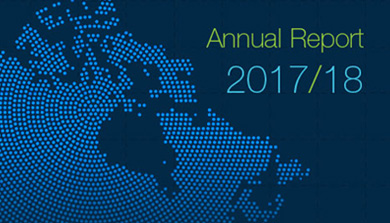Table of contents
- A Message from the Ombudsman
- A Word from the Deputy Ombudsman
- Making a Difference for Veterans and Their Families
- How We Help
- 2017-18 at a Glance
- Financial Statements
- How to Reach Us
A Message from the Ombudsman
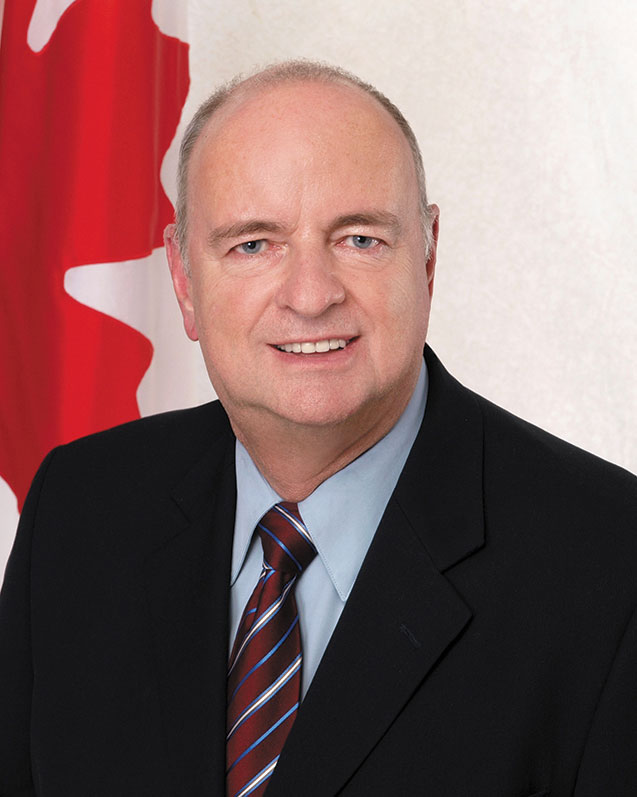
After eight years serving as a special advisor to six Ministers of Veterans Affairs, I am proud to present to you my final Annual Report. It encompasses all activities that the Office of the Veterans Ombudsman (OVO) undertook from April 1, 2017, to March 30, 2018.
Last year was another busy year for the OVO team, which was celebrating 10 years of operations. Over the past decade, the OVO has helped tens of thousands of Veterans and their families. Not only did we change the lives of these specific individuals, but we also influenced change in the way some benefits are administered for all Veterans.
Over the course of 2017-18, I participated in hearings before the House of Commons Standing Committee on Veterans Affairs (ACVA) and the Senate Subcommittee on Veterans Affairs (VEAC) on the topics of transition, mental health, and a comparative study of services to Veterans in other jurisdictions. I am pleased that both committees included my opinions and evidence-based findings in many of their report recommendations. Also, I continued to push for greater clarity and transparency for Veterans and their families as the measures from Budget 2017 were being implemented, including the new Caregiver Recognition Benefit and Education and Training Benefit, and expanding access to the Military Family Resource Centre for medically-released Veterans and their families.
Additionally, I met with hundreds of Veterans and their families, Veterans’ advocates, and Veterans’ organizations nationwide at numerous stakeholder meetings and town halls that I hosted. I also attended and participated in many other Veterans’ events. By listening to Veterans from across the country, I continued to gain a better understanding of the issues and concerns that are affecting all of them.
I am often asked if I have seen “real change” for Veterans and their families in my time as Veterans Ombudsman. My answer is an unequivocal “yes”. The recommendations I made have led to both legislative and regulatory changes, as well as changes to policies and processes, and new benefits and services. All these changes represent more support today for Veterans and their families than was the case in 2010.
I want to thank everyone who has contributed, during my mandate, to help Veterans and their families, and I want to give a special thanks to my OVO team, Veterans organizations, and the members of the Veterans Ombudsman Advisory Council. I have been honoured to work with all of you and to benefit from your experience to better support Veterans and their families. It is important that the OVO and the Veterans’ community continue the great work they accomplish together in promoting positive change!
Guy Parent
Veterans Ombudsman
A Word from our Deputy Ombudsman

This has been another milestone year for the OVO as we continued to assist Veterans and their families and positively influence change for the Veterans’ community.
Veterans and their families made over 9,000 contacts with our frontline during the past year. This represents over 2,000 more contacts than the year before. The situations of these individuals are seldom simple and they are often emotionally-charged, but their issues are real. Many Veterans see our frontline as their last hope to resolve their issues.
What we hear from Veterans and their families on the frontline helps us to identify systemic issues that need to be addressed by Veterans Affairs Canada (VAC) . It leads us to conduct reviews of these issues, and then release reports that make recommendations for improvement. In 2017-18, we published three: Actuarial Analysis Follow-up Report, Continuum of Care: A journey from Home to Long Term Care, and Transitioning Successfully: A Qualitative Study, which led to 11 recommendations. We will continue to closely monitor action on these recommendations in the coming months. The OVO also presented at a number of conferences both in Canada and in the United States, with a view to share best practices with other ombudsman organizations.
The OVO continued to seamlessly integrate new digital opportunities into our outreach activities. We exceeded our expectations when almost 20,000 Veterans, their families, and other Canadians participated in a Facebook Live Q&A with VAC on the announced “Pension for Life,” on March 13, 2018.
This year, we implemented a new Ombudsman File Tracking System, which helps us better manage our increasing workload and gain greater insight into trends. We also implemented an online complaint application to make it simpler for Veterans to submit a complaint or to seek a review of their complaints. More improvements are planned for the future.
On behalf of the OVO, I would like to thank Guy for his expert leadership as Ombudsman over the past eight years. Soon we will be gearing up to welcome the new Veterans Ombudsman in 2018-19.
Sharon Squire
Deputy Veterans Ombudsman
Making a Difference for Veterans and Their Families
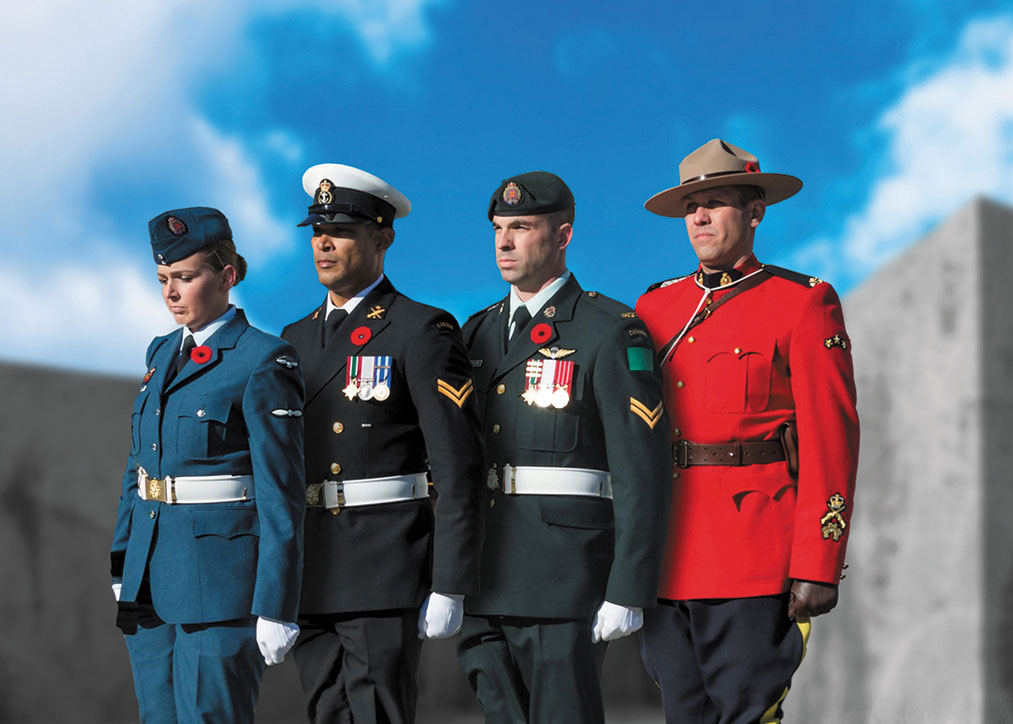
Each year, thousands of Veterans and their families contact us to get help regarding VAC’s programs and services. Some of their stories have been inserted throughout this report, and although names of individuals are not disclosed to protect privacy, these are real stories that occurred in 2017-18.
Success Story
An Overpayment Situation: Helping a Veteran’s Survivor

A Veteran who received Veterans Independence Program benefits passed away. The spouse moved in with their daughter and immediately informed VAC of the new living arrangement, and later sent several other letters to VAC informing them that the grounds of the new home no longer required assisted maintenance. VAC, however, continued to issue payments for several years.
Eventually, VAC requested a repayment of several thousand dollars. The Veteran’s survivor was very upset. As far as the Veteran’s survivor knew, VAC was informed and had approved all the necessary benefits. The Veteran’s survivor had done everything correctly, and none of VAC’s communications throughout the years had led the Veteran’s survivor to believe that she would have to repay VAC.
When the survivor contacted our Office for help, we spoke to the daughter who told us, “We did everything VAC asked. We were very upset by these overpayment demands, and it’s unfair to expect us to repay that now.”
After reviewing the file, our Office requested that VAC write-off the overpayment. This request was initially met with resistance, but after contacting Kirkland Lake Finance with a chronological account of what happened and quoting relevant policy, we succeeded.
We were glad we could help!
How We Help
Who We Are
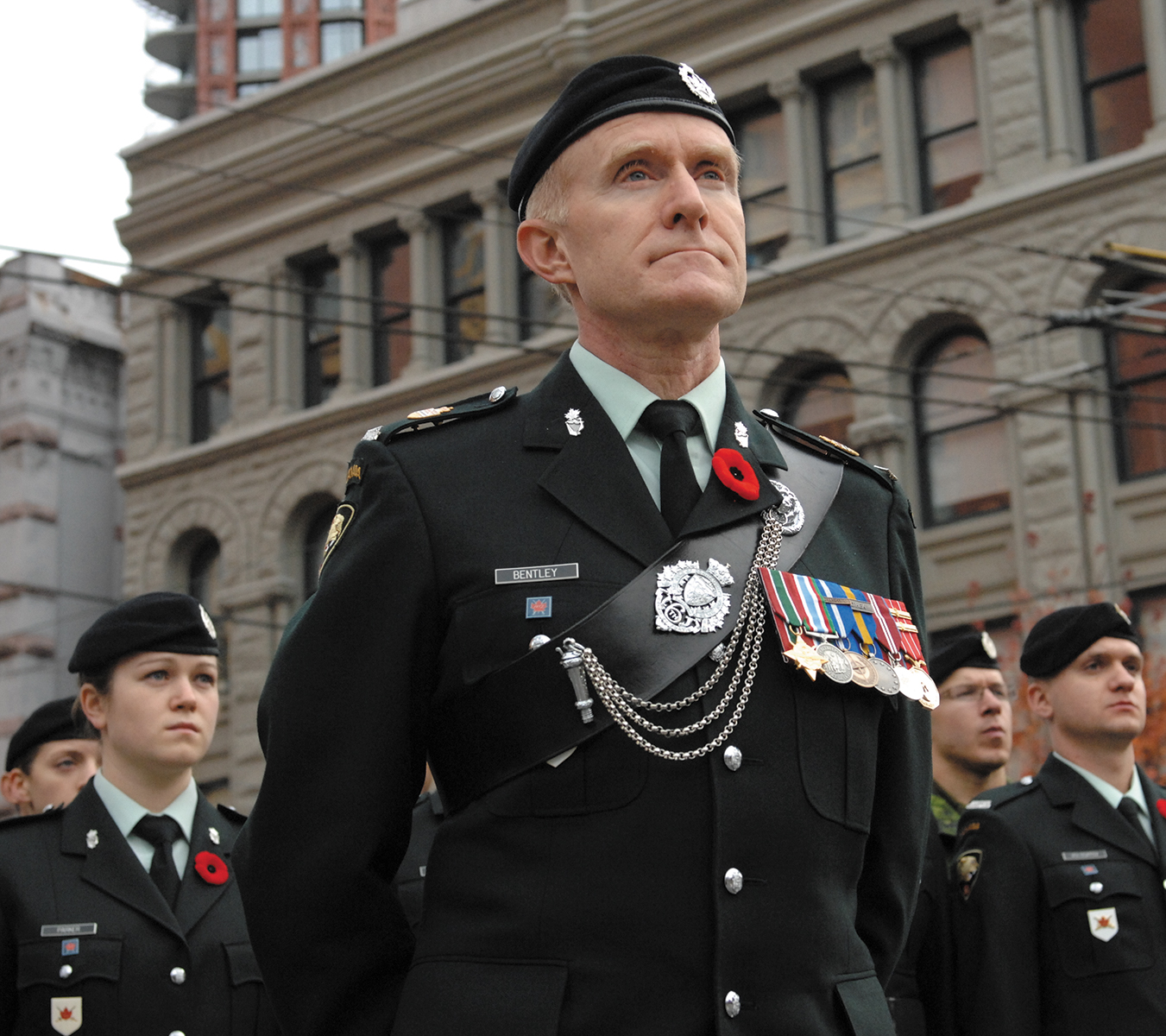
We work to ensure that Canada’s Veterans, serving members of the Canadian Armed Forces (CAF) and the (RCMP), their families, and other clients of VAC, are treated respectfully, in accordance with the Veterans Bill of Rights, and receive the services and benefits that they require in a fair, timely, and efficient manner. We play an important role in raising awareness of the needs and concerns of the entire Canadian Veterans’ community.
Who We Serve
- Veterans of the Second World War and the Korean War
- Veterans of the Canadian Armed Forces CAF – (Regular Force and Reserve Force).
- Serving members of the CAF (Regular Force and Reserve Force).
- Veterans of the RCMP, and serving members
- Immediate family members and caregivers of any of the above-mentioned groups
- Survivors of Veterans
What We Do
Assist
– Inform
...those who call for help, by providing necessary information and by facilitating referrals to service providers who can best help them.
Address
complaints
...from those who believe they have been treated unfairly by VAC or other service providers.
Conduct
research
...to produce reviews and reports containing recommendations to address systemic issues than can potentially affect many other Veterans and their families.
Provide
Advice
...to the Minister of Veterans Affairs and Parliamentary Committees on issues of importance to Veterans and their families.
Veterans Ombudsman Advisory Council
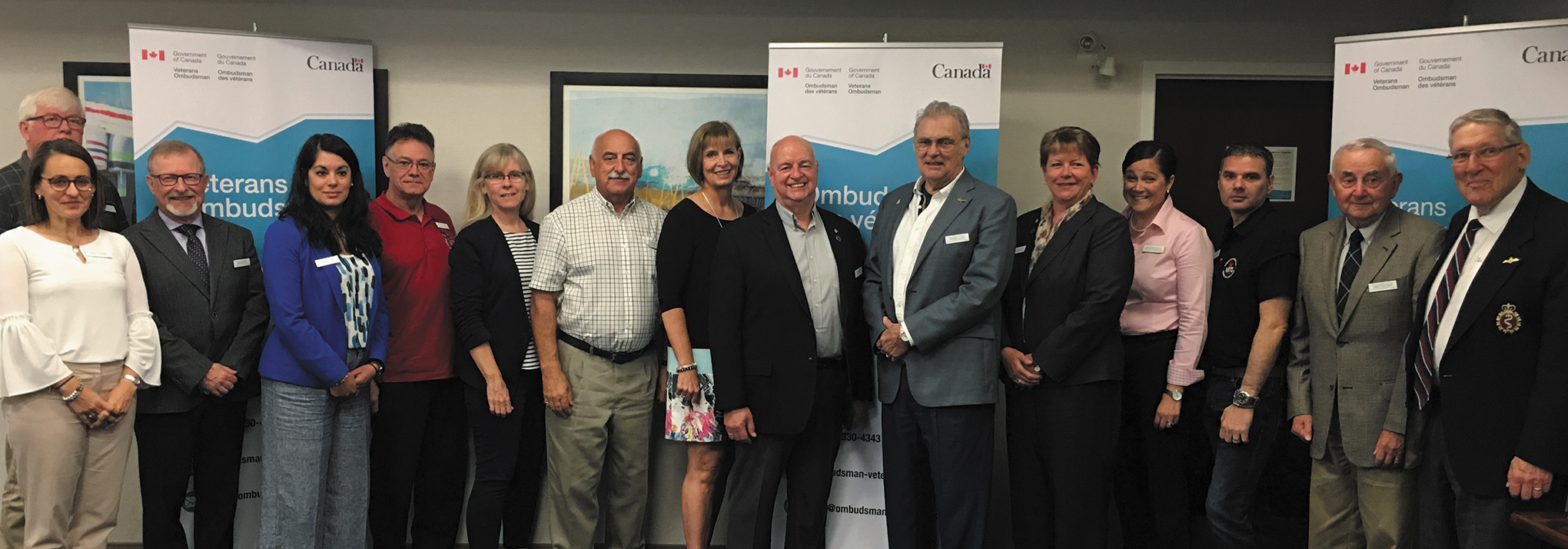
- Provides advice to the Veterans Ombudsman on issues related to his mandate
- Assists in promoting the well-being of all Veterans and their families by identifying emerging issues of importance to the Veterans’ community and by providing advice to the Ombudsman on how to best approach those issues
Members:
- Pierre Allard
- Heather Armstrong
- Stacey De Savoye
- Larry Gollner
- Dave Leblanc
- Jim Lowther
- Luc O’Bomsawin
- James Popplow
- Heidi Sveistrup
Success Story
Veterans Independence Program Benefits for a Veteran in Need
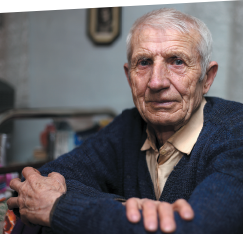
A Veteran who was over 80 years old reached out to our Office because he was denied Veterans Independence Program VIP benefits for housekeeping and grounds maintenance. The Veteran suffered from serious heart ailments, in addition to a host of other health problems. His wife was permanently disabled and he was her main caregiver. They lived off a minimal income, and had to pay someone to help with housework and yardwork.
VAC based their decision on a determination that there was no direct link between the Veteran’s need for VIP benefits and his pensioned condition, and he did not meet the eligibility criteria for a frail pensioner.
Our Office reviewed the Veteran’s file – specifically, a nursing assessment that outlined the Veteran’s health conditions, and recommended benefits for housekeeping, grounds keeping, and snow removal, along with the need for assistance with meals. We asked the Department to review the file urgently as the Veteran was in hospital. VAC reviewed his file and the frail pensioner criteria, and found that he did, in fact, meet the eligibility criteria. They immediately approved VIP benefits retroactively to the date of the initial application.
2017/18 at a Glance
Making Recommendations and Conducting Research
The Office of the Veterans Ombudsman provides evidence-based analysis to support decision making. We consult with Veterans and stakeholders, publish reviews, reports and infographics, and make recommendations on key issues of concern to Veterans and their families. In 2017-18, the following reports highlighted issues that need to be addressed and made recommendations for improvement.
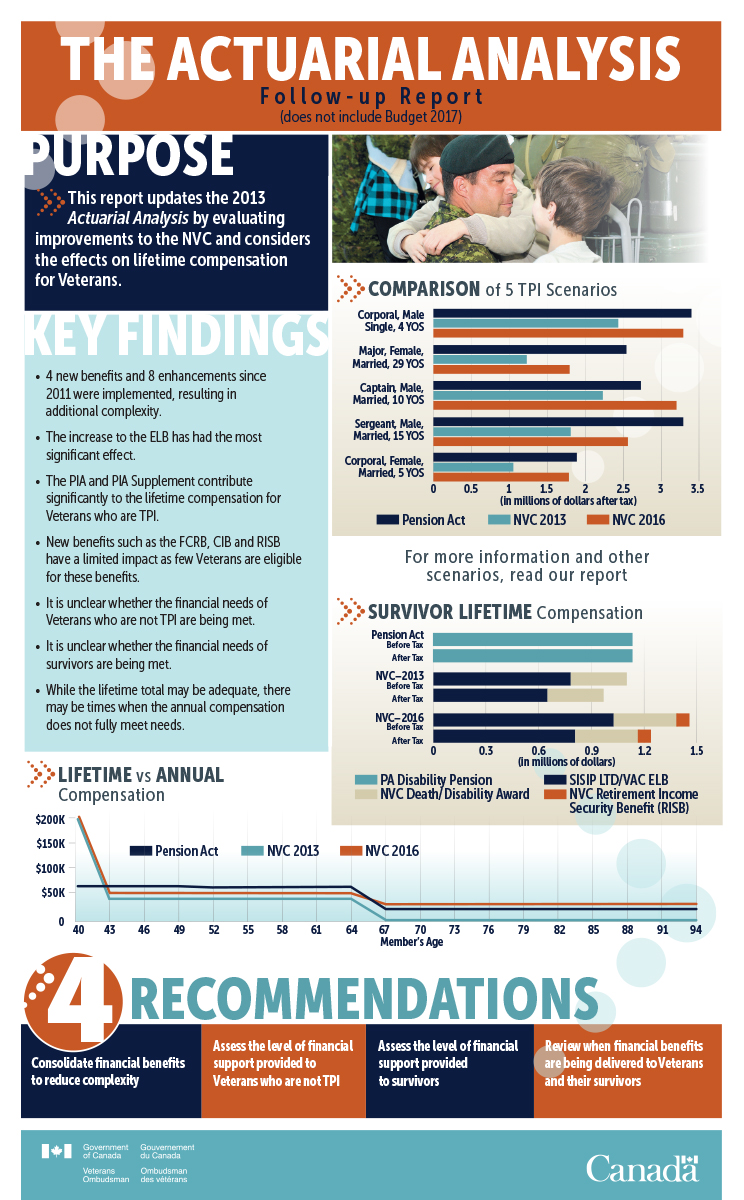
Determinants of Successful Transition - Preliminary Findings - Infographic
Purpose
This report updates the 2013 Actuarial Analysis by evaluating improvements to the NVC and considers the effects on lifetime compensation for Veterans.
| Pension Act | NVC 2013 | NVC 2016 | |
| Caporal, Male, Single, 4 years of service | $3,366,579 | $2,423,171 | $3,310,239 |
| Major, Female, Married, 29 years of service | $3,523,052 | $1,692,124 | $2,292,551 |
| Captain, Male, Married, 10 years of service | $2,732,643 | $2,193,854 | $3,222,261 |
| Sergeant, Male, Married, 15 years of service | $3,299,424 | $1,816,033 | $2,592,688 |
| Corporal, Female, Married, 5 years of service | $1,908,271 | $1,045,654 | $1,736,619 |
Key Findings
- 4 new benefits and 8 enhancements since 2011 were implemented, resulting in additional complexity.
- The increase to the ELB has had the most significant effect.
- The PIA and PIA Supplement contribute significantly to the lifetime compensation for Veterans who are TPI.
- New benefits such as the FCRB, CIB and RISB have a limited impact as few Veterans are eligible for those benefits.
- It is unclear whether the financial needs of Veterans who are not TPI are being met.
- It is unclear whether the financial needs of survivors are being met.
- While the lifetime total may be adequate, there may be times when the annual compensation does not fully meet needs.
| Pension Act | NVC 2013 | NVC 2016 | ||||
|---|---|---|---|---|---|---|
| Benefit Name | Before Tax | After Tax | Before Tax | After Tax | Before Tax | After Tax |
| SISIP LTD / VAC ELB | 0 | 0 | 790,418 | 646,317 | 1,009,979 | 809,805 |
| PA Disability Pension | 1,123,128 | 1,123,128 | 0 | 0 | 0 | 0 |
| PA Exceptional Incapacity Allowance | 0 | 0 | 0 | 0 | 0 | 0 |
| PA Attendance Allowance | 0 | 0 | 0 | 0 | 0 | 0 |
| NVC Death/Disability Award | 0 | 0 | 310,379 | 310,379 | 360,000 | 360,000 |
| NVC Critical Injury Benefit | 0 | 0 | 0 | 0 | 0 | 0 |
| NVC Permanent Impairment Allowance | 0 | 0 | 0 | 0 | 0 | 0 |
| NVC Permanent Impairment Allowance Supplement | 0 | 0 | 0 | 0 | 0 | 0 |
| NVC Supplementary Retirement Benefit | 0 | 0 | 0 | 0 | 0 | 0 |
| NVC Retirement Income Security Benefit (RISB) | 0 | 0 | 0 | 0 | 0 | 0 |
| NVC Family Caregiver Relief Benefit | 0 | 0 | 0 | 0 | 0 | 0 |
| Total | $1,123,128 | $1,123,128 | $1,100,797 | $956,696 | $1,431,079 | $1,230,906 |
| Member Age | Pension Act | NVC 2013 | NVC 2016 |
| 40 | $63,615 | $196,484 | $204,969 |
| 41 | $63,615 | $41,295 | $49,780 |
| 42 | $63,615 | $41,295 | $49,780 |
| 43 | $63,615 | $41,295 | $49,780 |
| 44 | $63,615 | $41,295 | $49,780 |
| 45 | $63,615 | $41,295 | $49,780 |
| 46 | $63,615 | $41,295 | $49,780 |
| 47 | $63,615 | $41,295 | $49,780 |
| 48 | $63,615 | $41,295 | $49,780 |
| 49 | $63,615 | $41,295 | $49,780 |
| 50 | $63,615 | $41,295 | $49,780 |
| 51 | $63,613 | $41,295 | $49,780 |
| 52 | $63,613 | $41,295 | $49,780 |
| 53 | $63,613 | $41,295 | $49,780 |
| 54 | $63,613 | $41,295 | $49,780 |
| 55 | $63,613 | $41,295 | $49,780 |
| 56 | $63,613 | $41,295 | $49,780 |
| 57 | $63,613 | $41,295 | $49,780 |
| 58 | $63,613 | $41,295 | $49,780 |
| 59 | $63,613 | $41,295 | $49,780 |
| 60 | $63,613 | $41,295 | $49,780 |
| 61 | $63,613 | $41,295 | $49,780 |
| 62 | $63,613 | $41,295 | $49,780 |
| 63 | $63,613 | $41,295 | $49,780 |
| 64 | $63,613 | $41,295 | $49,780 |
| 65 | $20,218 | $26,454 | $63,322 |
| 66 | $20,218 | $0 | $31,433 |
| 67 | $20,218 | $0 | $31,433 |
| 68 | $20,218 | $0 | $31,433 |
| 69 | $20,218 | $0 | $31,433 |
| 70 | $20,218 | $0 | $31,433 |
| 71 | $20,218 | $0 | $31,433 |
| 72 | $20,218 | $0 | $31,433 |
| 73 | $20,218 | $0 | $31,433 |
| 74 | $20,218 | $0 | $31,433 |
| 75 | $20,218 | $0 | $31,433 |
| 76 | $20,218 | $0 | $31,433 |
| 77 | $20,218 | $0 | $31,433 |
| 78 | $20,218 | $0 | $31,433 |
| 79 | $20,218 | $0 | $31,433 |
| 80 | $20,218 | $0 | $31,433 |
| 81 | $20,218 | $0 | $31,433 |
| 82 | $20,218 | $0 | $31,433 |
| 83 | $20,218 | $0 | $31,433 |
| 84 | $20,218 | $0 | $31,433 |
| 85 | $20,218 | $0 | $31,433 |
| 86 | $20,218 | $0 | $31,433 |
| 87 | $20,218 | $0 | $31,433 |
| 88 | $20,218 | $0 | $31,433 |
| 89 | $20,218 | $0 | $31,433 |
| 90 | $20,218 | $0 | $31,433 |
| 91 | $20,218 | $0 | $31,433 |
| 92 | $20,218 | $0 | $31,433 |
| 93 | $20,218 | $0 | $31,433 |
| 94 | $20,218 | $0 | $31,433 |
Recommendations
- Consolidate financial benefits to reduce complexity
- Assess the level of financial support provided to Veterans who are not TPI
- Assess the level of financial support provided to survivors
- Review when financial benefits are being delivered to Veterans and their survivors
Actuarial Analysis Follow-up Report
- Published May 4, 2017.
- Evaluated the changes to financial benefits that were made to the New Veterans Charter (NVC) since our 2013 Actuarial Analysis review and report.
- Used eight different scenarios to compare and analyze the effects of financial benefits on lifetime compensation for Veterans.
- Concluded that although improvements were made, some areas still required further review and improvement.
- Made four recommendations to reduce complexity and better meet the lifelong financial needs of Veterans and their families.
Continuum of Care: A Journey from Home to Long Term Care
- Published October 17, 2017.
- Provided an update on the current context related to the continuum of care.
- Made recommendations to address gaps in three key areas across the continuum of care:
- Care at home
- Assisted living
- Long-term care
- Recommended seven changes to help reduce complexity and enhance benefits and services to those who need them, when and where they are needed.
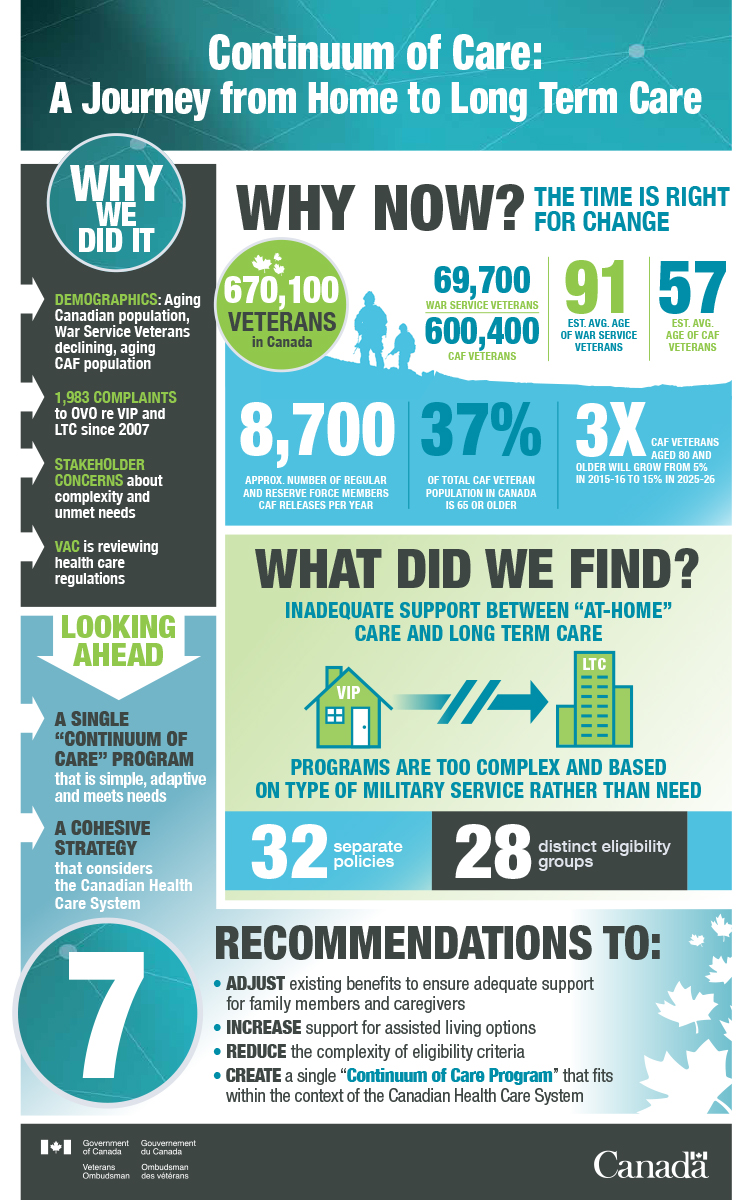
Continuum of Care: A Journey from Home to Long Term Care - Infographic
Why we did it
- Demographics: Aging Canadian population, War Service Veterans declining, aging CAF population
- 1,983 complaints to OVO re VIP and LTC since 2007
- Stakeholder concerns about complexity and unmet needs
- VAC is reviewing health care regulations
Why now?
The time is right for change
There are an estimated 670,100 Veterans in Canada. Some key details of that population:
- There are an estimated 69,700 War Service Veterans and 600,400 CAF Veterans
- The average age of War Service Veterans is 91
- The average age of CAF Veterans is 57
- The CAF releases approximately 8700 Regular and Reserve Force members per year
- More than one-third (37%) of the total CAF Veteran population in Canada is 65 or older
- The proportion of CAF Veterans aged 80 or older is expected to triple over the next decade, from 5% in 2015-16 to 15% in 2025-26
What did we find?
Inadequate support between “At-Home” Care and Long Term Care
Programs are too complex and based on type of military service rather than need
- 32 separate policies
- 28 distinct eligibility groups
Looking ahead
- A singe “Continuum of Care” Program that is simple, adaptive and meets needs
- A cohesive strategy that considers the Canadian Health Care System
7 recommendations to:
- Adjust existing benefits to ensure adequate support for family members and caregivers
- Increase support for assisted living options
- Reduce the complexity of eligibility criteria
- Create a single “Continuum of Care Program” that fits within the context of the Canadian Health Care System
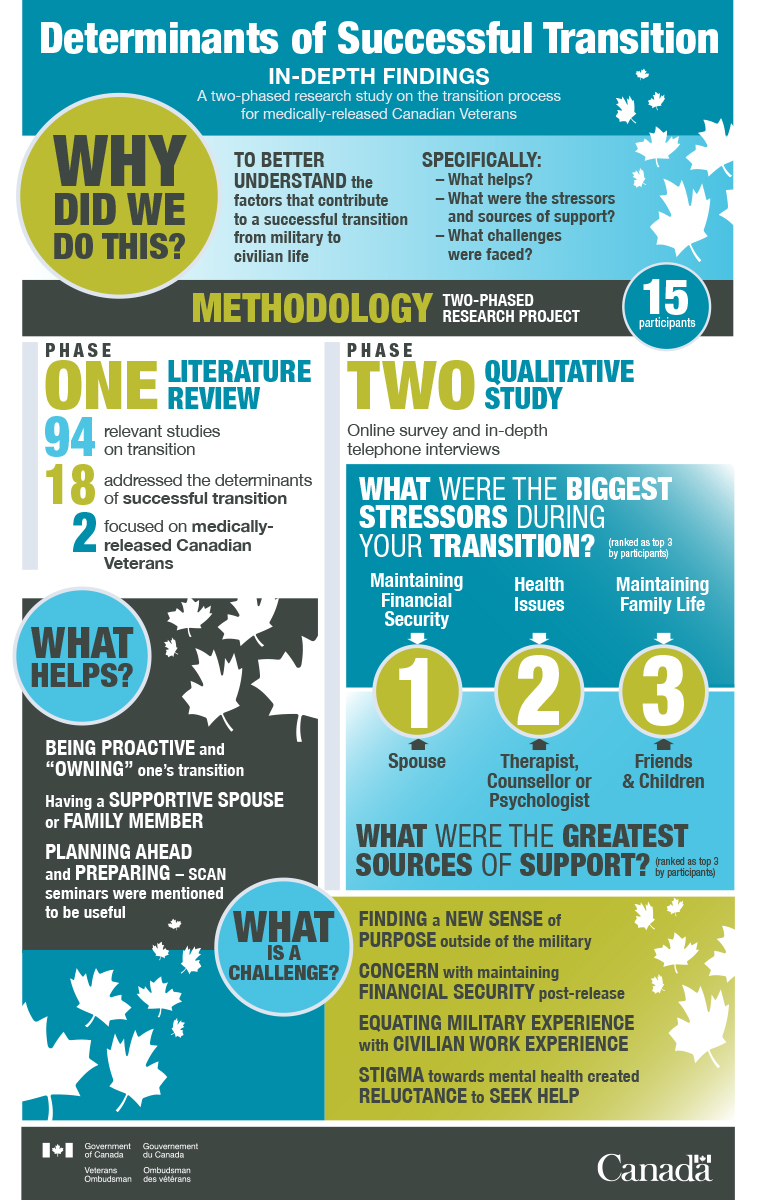
Transitioning Successfully: A Qualitative Study – Infographic
In-Depth Findings
A two-phased research study on the transition process for medically-released Canadian Veterans
Why did we do this?
To better understand the factors that contribute to a successful transition from military to civilian life
Specifically:
- What helps?
- What were the stressors and sources of support?
- What challenges were faced?
Methodoloy
Two-phased research project - 15 participants
Phase ONE: Literature Review
- 94 relevant studies on transition
- 18 addressed the determinants of successful transition
- 2 focused on medically-released Canadian Veterans
Phase TWO: Qualitative Study
Online survey and in-depth telephone interviews
What were the biggest stressors during your transition?
(ranked as top 3 by participants)
- Maintaining Financial Security
- Health Issues
- Maintaining Family Life
What were your greatest sources of support?
(number of times ranked in top 3 by participants)
- Spouse
- Therapist, Counsellor or Psychologist
- Friends & Children
What helps?
- Being proactive and "owning" one's transition
- Having a supportive spouse or family member
- Planning ahead and preparing - SCAN seminars were mentioned to be useful
What is a challenge?
- Finding a new sense of purpose outside of the military
- Concern with maintaining financial security post-release
- Equating military experience with civilian work experience
- Stigma towards mental health created relunctance to seek help
Transitioning Successfully: A Qualitative Study
- Published November 2, 2017.
- Provided a literature review summary.
- Described the OVO’s two-phased study to better understand the factors that contribute to a successful transition from military to civilian life.
- Conducted in-depth interviews with 15 medically-released Veterans who self-identified as having successfully transitioned.
- Identified several contributors and challenges to a successful transition.
- Findings included:
- What helps? Being proactive and "owning" one's transition; having a supportive spouse or family member; planning ahead and preparing.
- What is a challenge? Finding a new sense of purpose outside of the military; concern with maintaining financial security post-release; equating military experience with civilian work experience; stigma towards mental health created reluctance to seek help.
Research: Reviewing VAC’s Service Delivery
We consulted with the Veterans’ community, through blogs and social media engagement, to assess the challenges Veterans face with respect to accessing benefits and services from VAC.
What we heard?
- Process is too complex
- Information is not always clear or transparent
- Decisions take too long.
To follow up on these findings, we have initiated a review of the timeliness of VAC decisions, leading to the publication of the Meeting Expectations: Timely and Transparent Decisions for Canada's Ill and Injured Veterans report in 2018-19.
Success Story
Retroactive Pension Rate Increase

A Veteran received a favourable decision from the Veterans Review and Appeal Board ((VRAB)) that resulted in an increased assessment of his pensioned condition. At the time the decision was rendered, the Veteran had been paid the maximum (100%) for his combined disability pension and awards, and according to VAC policy, no further payments were authorized. However, the effective date of the VRAB decision fell at a point in time when the Veteran had not reached a total assessment of 100%, so an increase in his pension rate was possible.
Our Office reviewed the complaint and found that VAC’s interpretation of the policy was not Veterancentric. We argued that the decision fell under the authority of the Pension Act and it was payable retroactively to the date of application and should not be affected by New Veterans Charter-related policy.
This complex case required high-level discussions with VAC over an extended period. As a result of our Office’s intervention, VAC agreed to adjust the disability pension and disability awards payments retroactively to the effective dates. This resulted in a 10% increase in the Veteran’s pension for life.
Helping Veterans and their families
How our clients reached us
6904Phone |
1445 |
655Online |
67Fax |
79 |
33In-person |
9183Total |
1,713 files were addressed during 2017-18
Of those:
- 18% were addressed but unresolved (the majority attributed to the turnaround time for a decision on a disability benefit application)
- 26% were referred to the appropriate authorities (that could best handle the issues that were raised)
- 56% were resolved:
- 11% were deemed unfounded and no further action was required
- 89% to the satisfaction of both the clients and the Department
1,906 files were opened in 2017-18
Type of client:
- Traditional Veteran: 3%
- Regular Force: 13%
- Former Regular Force: 58%
- Reserve Force: 1%
- Former Reserve Force: 7%
- RCMP: 1%
- Former RCMP: 3%
- Survivor/Family: 4%
- Civilian: 1%
- Allied Veteran: 1%
- Not Provided: 8%
Region:
| Atlantic | Quebec | Ontario | West | Other |
|---|---|---|---|---|
| 20% | 26% | 25% | 26% | 3% |
Gender:
| Male | Female |
|---|---|
| 84% | 16% |
Age:
| 20-29 | 30-39 | 40-49 | 50-59 | 60-69 | 70-79 | 80-89 | 90+ | Age not provided |
|---|---|---|---|---|---|---|---|---|
| 3% | 66% | 22% | 28% | 10% | 5% | 4% | 3% | 9% |
Files related toNote de bas de page *:
Compensation of Pain and Suffering Benefits 34%
- Family Caregiver Benefit: 2%
- Disability Benefits: 30%
- Other: (Attendance Allowance, Exceptional Incapacity Allowance, etc.): 2%
Financial economic support 11%
- Career Impact Allowance: 6%
- Earnings Loss Benefit: 4%
- Other: 1%
Rehabilitation Services and Vocational Assistance 4%
- Medical Psychosocial services: 2%
- Vocational: 2%
Under the Veterans Continuum of Care Support 20%
- Health Services: (physio, massage, etc.): 3%
- Housekeeping/Groundkeeping: 2%
- Prescription Drugs: 5%
- Special Equipment: 3%
- Others: (Access to Nutrition, Home Adaptation, Personal Care, etc.): 7%
General Services 9%
- Case Management: 4%
- Others: (Assistance fund, My VAC Account, Funerals & Burials, etc.): 5%
Outside OVO Jurisdiction 16%
- SISIP, DND/CAF,Provincial/Federal: 7%
- Others: (Municipal, personal, etc.): 9%
Veterans Review and Appeal Board VRAB 5%
Bureau of Pension Advocates (BPA) 1%
Influencing Parliamentarians
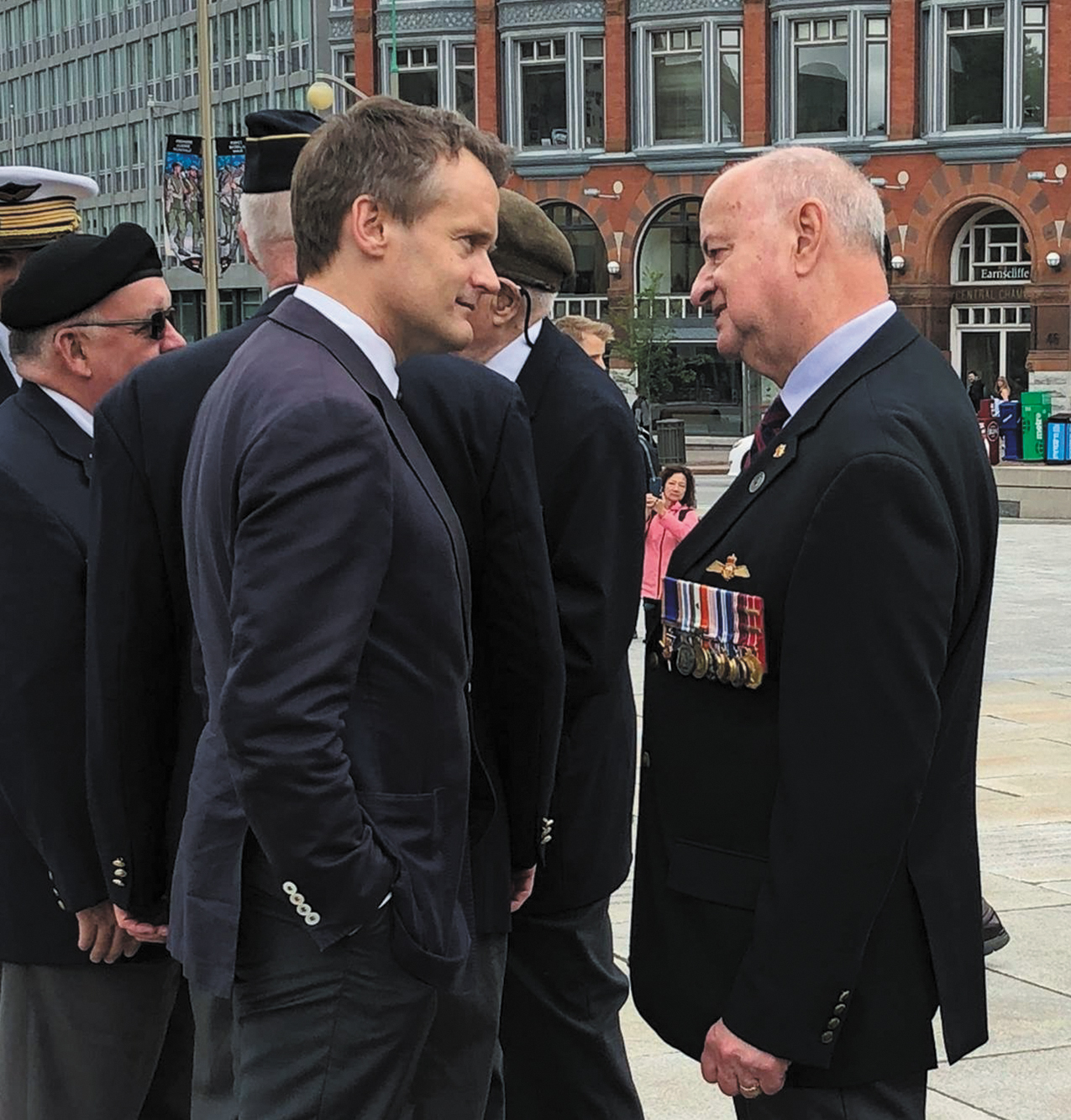
In the photo are the Veterans Ombudsman Guy Parent with Minister Seamus O’Regan.
Parliamentary Committees are created and empowered by the House of Commons or Senate. They provide an opportunity for parliamentarians to study an issue and make recommendations for change. Their role has been important over the years in relation to advancing change in Veterans’ issues, and 2017-18 was no exception. The Veterans Ombudsman appeared before committees and influenced change each time. For example:
House of Commons Standing Committee on Veterans Affairs ACVA
- Comparative Study of Services to Veterans in Other Jurisdictions
- The Veterans Ombudsman and the Deputy Veterans Ombudsman appeared before ACVA on May 1 and November 2, 2017.
- As the first witness at the hearings, the Ombudsman set the tone by stating: “I think it is important to look at what other countries are doing to support their Veterans in order to keep up with best practices. However, I also think it is imperative to develop Canadian solutions to address Canadian challenges and problems.”
- Mental Health and Suicide Prevention Among Veterans: A Family Purpose
- In the June 16, 2017, ACVA report, the Veterans Ombudsman was noted in relation to the Committee’s Recommendation 10: “…for military personnel who are released for medical reasons, all benefits should be adjudicated, and all services put in place before the member is officially released.”
- Barriers to Transition and Measurable Outcomes of Successful Transition
- The Veterans Ombudsman and the Deputy Veterans Ombudsman appeared before ACVA on February 27, 2018.
- In the Committee’s report, A Seamless Transition to Civilian Life for all Veterans: It’s time for Action, the Veterans Ombudsman is mentioned 38 times and his position is cited in the justification for seven of the report’s 15 recommendations.
House of Commons Standing Committee on Finance (FINA)
- Study of Bill C-44, An Act to Implement Certain Provisions of the Budget Tabled in Parliament on March 22, 2017, and Other Measures
- The Veterans Ombudsman’s May 19, 2017, brief noted that he was pleased that the Government had taken his recommendations and those of many Veterans’ organizations seriously and in Bill C-44 was moving forward on several of them.
- He noted that Budget 2017 recognized the role of caregivers by providing compensation directly to them through the new Caregiver Recognition Benefit, for which he had been advocating strongly. He characterized this new benefit as a substantive step forward in recognizing that family members who act as caregivers, need benefits in their own right because of the significant role many play in supporting Veterans.
- He also noted that the new Education and Training Benefit had the potential to provide significant support to all releasing members, including Reservists, who wish to further their education after their service and could be a real game changer for Veterans transitioning to civilian life.
Success Story
Medical Marijuana for a Veteran Overseas

A Veteran who was approved for medical marijuana in Canada was denied this treatment when he moved overseas. VAC does not reimburse the cost of cannabis for medical purposes when a veteran purchases cannabis outside Canada, because the Department is not able to adequately ensure the same level of regulatory oversight internationally as what is done by Health Canada. The Veteran suffered from a unique medical condition, in which other forms of medication are harmful to his health. He was paying for his medical marijuana out of his pocket, at a cost of roughly $600 per month.
Our Office looked into the circumstances and approached the Department on the client’s behalf. We explained our findings: the medical authorization, testing and sale of medical marijuana is federally regulated in the country in which he resides, similar to the way Health Canada oversees medical marijuana in Canada. As a result, VAC agreed to reimburse the expenses on an exceptional basis.
Outreach and Engagement
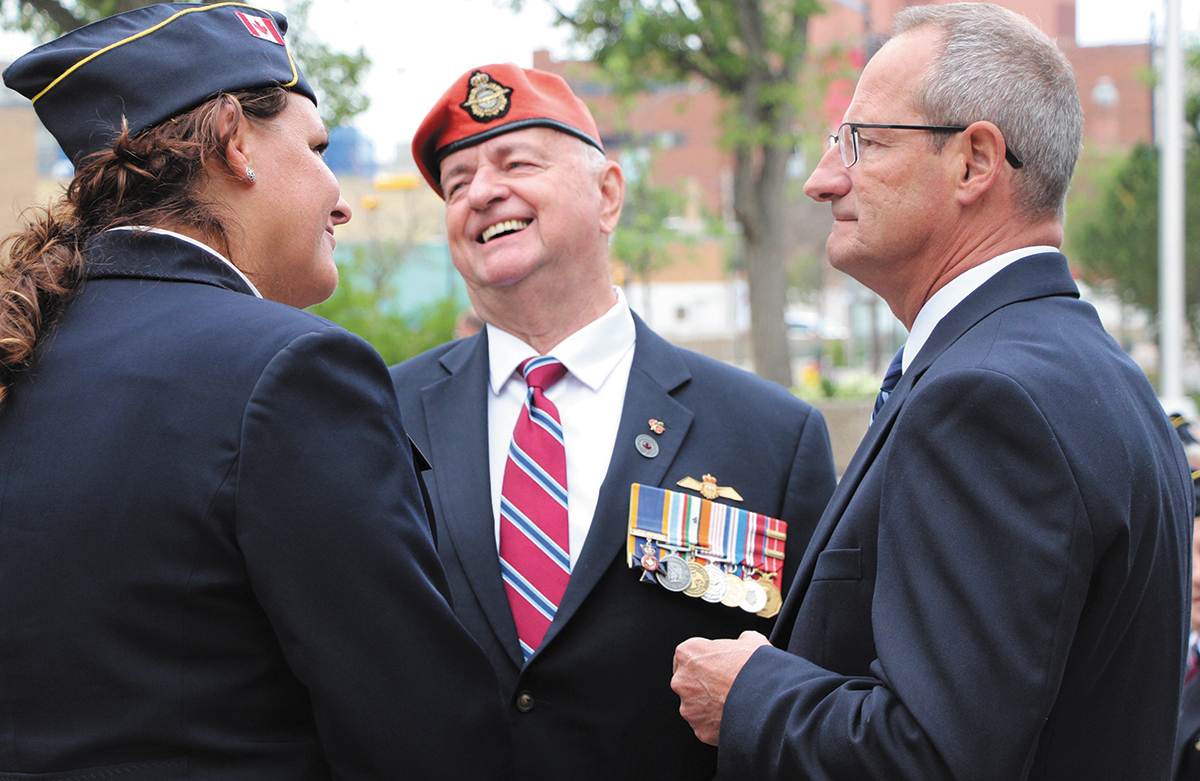
In the photo are Deanna Fimrite, Dominion Secretary-Treasurer of ANAVETS, Guy Parent, Veterans Ombudsman, and Jacques Bouchard, Deputy Chair of the Veterans Review and Appeal Board
Events and Engagement
- 5 Stakeholder meetings
- 6 Presentations at conferences (in Canada and internationally)
- 3 Town Hall meetings
- 5 Parliamentary committee appearances /submissions
- 19343 views Facebook live event – March 13
Digital Media
Website:
- 35238 visitors
- 15797 (new visitors since last year)
Facebook:
- 5100 fans
- 17000 engagements
- 2nd Facebook Live
- 19% increase in followers
Twitter:
- 2600 Followers
- 2400 Engagements
- 17% increase in followers
Instagram:
- 91 followers (launched in September 2017)
Traditional Media
- 24 Interviews
- 12 News releases
- 7 Media advisories
- 7 Articles/Op-eds
- 211 Print/Radio/TV Media mentions
Main topics discussed during outreach events and in social media:
- Complexity of VAC’s benefits and application processes
- Turnaround times
- Communication with VAC
- Veterans ID card
- Transition to civilian life
- Pension for Life
Veterans Ombudsman Commendation
Each year, the Veterans Ombudsman and his Advisory Council select individuals and groups who demonstrate an inspiring dedication to Veterans and their families through their work and organizations. The Veterans Ombudsman Commendation is awarded in recognition of their outstanding efforts for positive and lasting change in the Veterans’ community.
The 2017 recipients of the Veterans Ombudsman Commendation were:
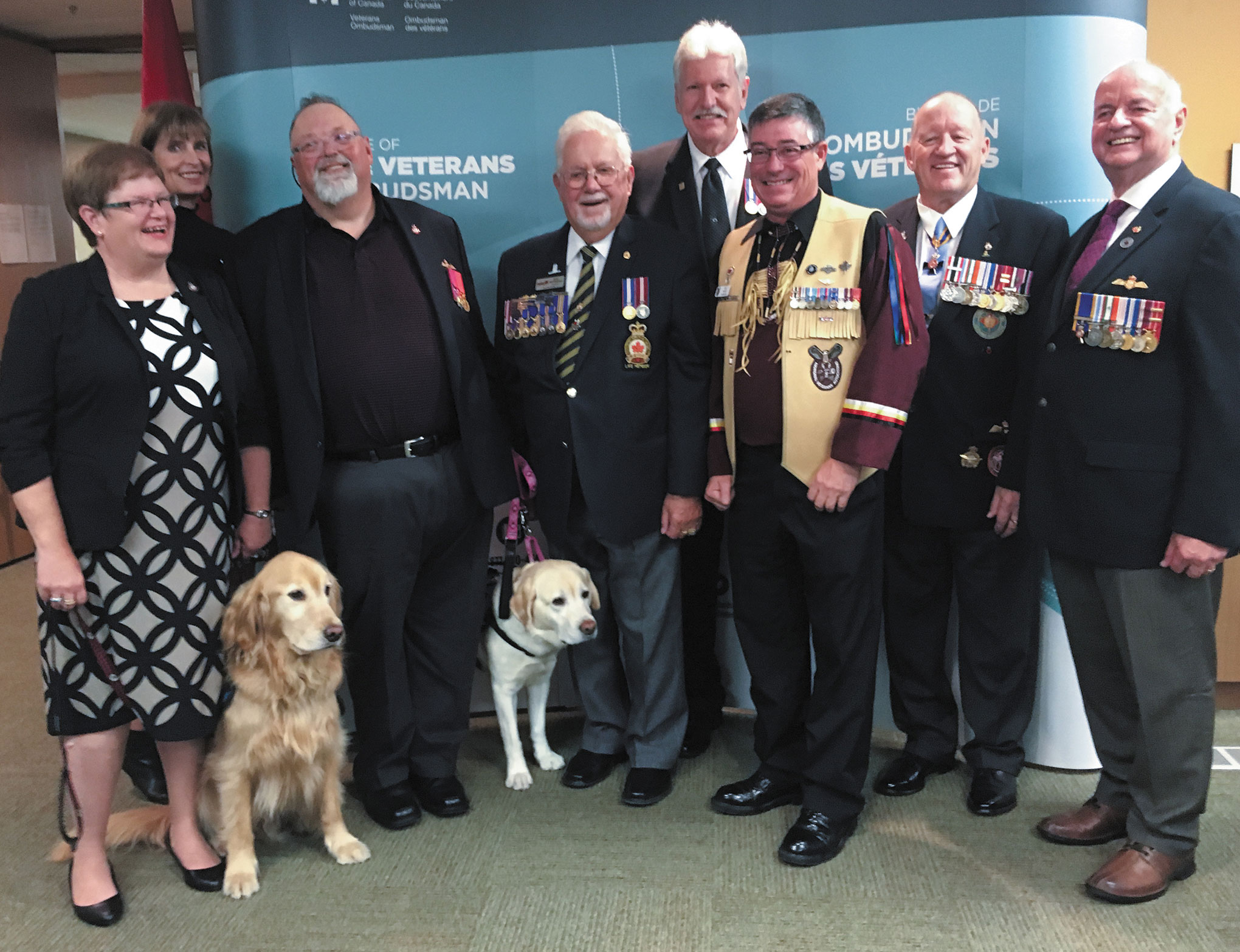
- For his lifetime contribution of helping Veterans:
- Lieutenant-General (Ret’d) Louis Cuppens, C.M.M., C.D
- For his ongoing contribution to the military community, and especially Aboriginal Veterans:
- Sergeant (Ret’d) Daniel Lafontaine
- For matching more than 90 Veterans and First Responders with service dogs across Canada:
- Paws Fur Thought
- For its outstanding work in providing affordable housing to Veterans:
- New Chelsea Society
Financial Statements
As per the 2017-18 Departmental Plan, the Veterans Ombudsman’s planned spending was $5.2 million for fiscal year 2017-18. The actual authorities at the end of fiscal year 2017-18 were $5.5 million.
Planned Spending and Treasury Board Authorities 2017-2018
| Organization | Salary (Planned) |
Operating (Planned) |
2017-18 Planned |
2017-18 Authorities |
|---|---|---|---|---|
| Office of the Veterans Ombudsman | $2,801,800 | $973,900 | $3,775,700 | $3,775,700 |
| Veterans Affairs Canada (provision of services to the Office) | $725,426 | $179,408 | $904,834 | $904,834 |
| Employee Benefit Plan | $553,774 | $547,167 | ||
| Net Adjustments (inc. Collective Bargaining) | $226,173 | |||
| Totals | $5,234,308 | $5,453,874 |
Veterans Ombudsman Program and Operational Expenditures 2017-18
| Program or Operational Requirements | Expenditures |
|---|---|
| Salaries and Wages | $2,770,321 |
| Total Salaries and Wages | $ 2,770,321 |
| Transportation and Communications | $195,997 |
| Information | $23,892 |
| Professional and Special Services | $249,954 |
| Rentals | $19,042 |
| Purchased Repair and Maintenance | $5,910 |
| Utilities, Materials and Supplies | $27,541 |
| Acquisition of Machinery and Equipment | $33,666 |
| Other | $16,342 |
| Total Operating Expenditures | $572,344 |
| Total - OVO | $3,342,665 |
2017-18 Veterans Affairs Canada, Program and Operational Expenditures for the Provision of Services to the OVO (Excluding Internal Services)
| Program or Operational Requirements | Expenditures |
|---|---|
| Salaries and Wages | $765,089 |
| Operating Expenditures | $127,260 |
| Total | $892,349 |
2017-18 Summary of Expenditures
| Expenditures | |
|---|---|
| Office of the Veterans Ombudsman | $3,342,665 |
| Veterans Affairs Canada (provision of services) | $892,349 |
| Employee Benefit Plan | $547,167 |
| Retroactive Collective Bargaining | $146,916 |
| Other (Paylist Allocation etc) | $31,137 |
| Total expenditures | $4,960,234 |
How to Reach Us
Submit a complaint online: https://ombudsman-veterans.gc.ca/en/requests-complaints/submit-inquiry-complaint
Calls within Canada (Toll-free): 1-877-330-4343
Follow us!
Facebook (VeteransOmbudsman)
Twitter (@VetsOmbudsman)
Instagram (@VeteransOmbudsmanCanada)
